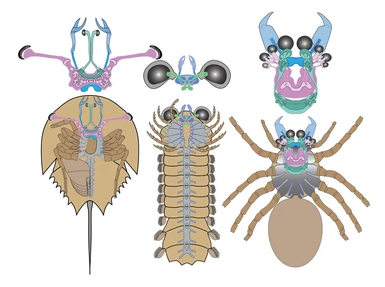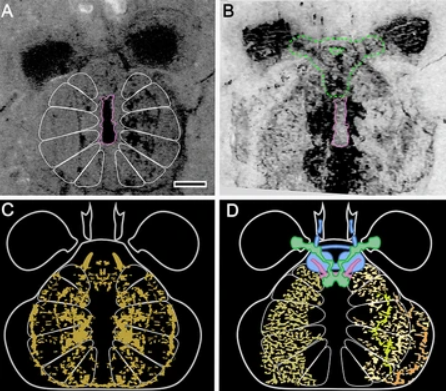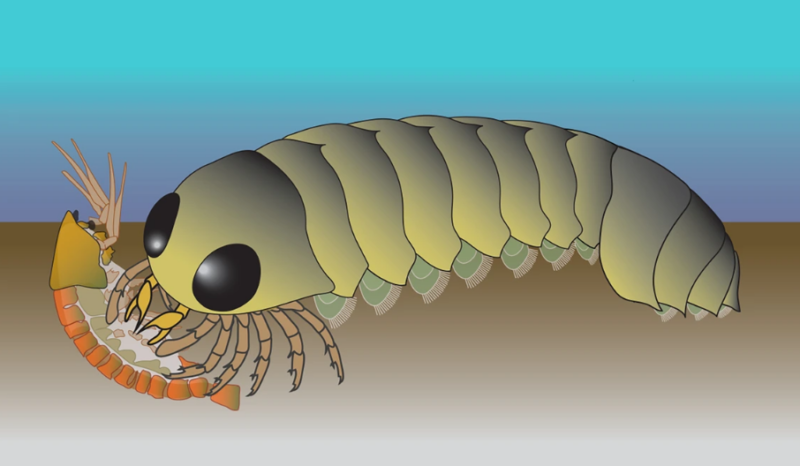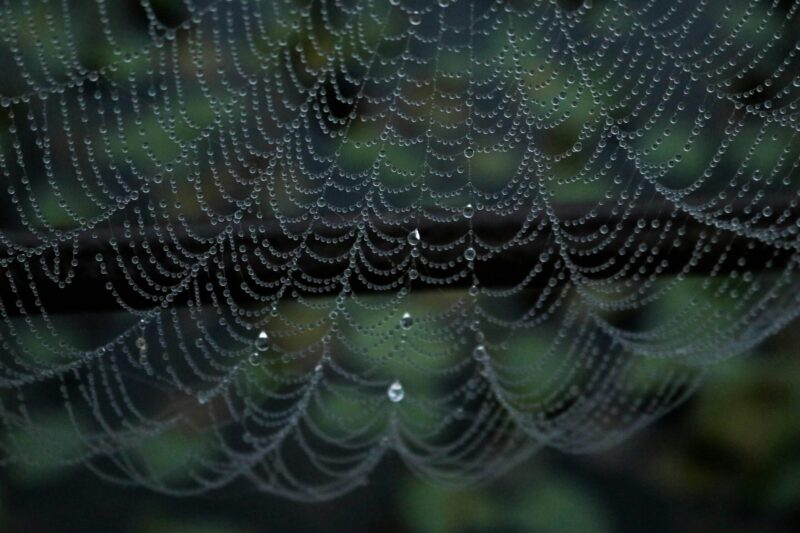Did arachnids originate in the sea?
We’re used to seeing spiders, scorpions and other arachnids hiding in holes or crawling through branches and leaves. But on July 22, 2025, a team of scientists from the United States and the United Kingdom said arachnids likely evolved in the sea. The researchers analyzed an exquisitely preserved fossil of a now-extinct marine creature with an exoskeleton: Mollisonia symmetrica. Arachnids share a similar body structure with this fossil, but the key lies in their unique brain and nervous system.
The researchers published their study in the peer-reviewed journal Current Biology on July 22, 2025.
A challenging theory
Until now, the widely accepted belief has been that arachnids came from a common ancestor that lived on land. From this common ancestor, arachnids began to evolve and diversify. However, a new analysis of a magnificently preserved fossil of a marine animal challenges that idea. The study suggests that arachnids might have begun their evolution in the sea. Before this discovery, the previous fossil record suggested that arachnids lived and diversified exclusively on solid ground.
Marine arthropods such as Mollisonia symmetrica are sea creatures with exoskeletons. Mollisonia symmetrica lived half a billion years ago. Fortunately, a Mollisonia fossil from the Burgess Shale formation of the Canadian Rockies has remained almost intact all this time. It has allowed scientists to perform a detailed analysis of its body structure and the fossilized features of its brain and central nervous system.
Meanwhile, spiders and scorpions have existed for about 400 million years, undergoing relatively few changes. So researchers have been able to make precise comparisons between the fossil and various modern-day arachnids and other animals living on Earth today.
An unexpected discovery
Until now, scientists thought the extinct Mollisonia symmetrica represented an ancestral member of a specific group of arthropods known as chelicerates. These animals lived during the Cambrian Period (between 540 and 485 million years ago) and included the ancestors of today’s horseshoe crabs.
Physically, Mollisonia had a body divided into two parts. First, it had a rounded front carapace, or hard upper shell. And second, it had a segmented trunk ending in a tail-like structure. This body structure resembles that of a scorpion.
In addition, the front part of Mollisonia functioned like the head of a spider: it had organized nerves controlling its limbs. Its small brain also sent signals to a pair of fang-like claws. This structure supports the idea that it was closely related to arachnids.
But what surprised researchers most was discovering that the neural structures in Mollisonia’s fossilized brain were not organized like those of horseshoe crabs, a marine animal. Instead, they mirrored the arrangement found in modern spiders and their relatives.
Arachnids’ brains
Spiders have a distinct brain that sets them apart. Imagine the brains of crustaceans, insects, centipedes and horseshoe crabs, but inverted! That is, the rear part of the brain is in front, and vice versa. According to the lead author of the study and Regents Professor in the Department of Neuroscience at the University of Arizona, Nicholas Strausfeld:
It’s as if the Limulus-type brain [a genus of horseshoe crab] seen in Cambrian fossils, or the brains of ancestral and present days crustaceans and insects, have been flipped backwards, which is what we see in modern spiders.

How to be sure?
To carry out the study, Strausfeld spent quite some time at Harvard University’s Museum of Comparative Zoology, where the Mollisonia fossil is. There, he took dozens of photographs using different lighting angles, varying intensities, polarized light and magnifications.
The researchers need to rule out the possibility that the similarities between Mollisonia’s brain and that of spiders were due to convergent evolution. As in, that they didn’t evolve similar traits but separately, due to similar environmental situations. So co-author David Andrew – formerly a graduate student in Strausfeld’s lab and now at Lycoming College in Pennsylvania – conducted a statistical analysis. He compared 115 neural and anatomical traits across both extinct and living arthropods.
The results placed Mollisonia as a sister group to modern arachnids. This supports the hypothesis that this ancient creature belongs to the evolutionary lineage that gave rise to today’s spiders, scorpions, solifuges, vinegaroons and other arachnids. According to co-author Frank Hirth from King’s College London:
This is a major step in evolution, which appears to be exclusive to arachnids. Yet already in Mollisonia, we identified brain domains that correspond to living species with which we can predict the underlying genetic makeup that is common to all arthropods.
Unfortunately, other arthropods similar to Mollisonia are not preserved well enough for detailed analysis of their nervous systems. But if they shared the same unique brain structure, their descendants could have formed divergent land-dwelling lineages that now make up various branches of the arachnid tree of life.

Why an inverted brain?
According to co-author Frank Hirth of King’s College London, this discovery could represent a key step in evolution. Studies on modern spider brains suggest this inverted nervous system organization enables more direct connections between control centers and the circuits that execute movement. And this possibly explains the remarkable agility of spiders and other arachnids.
This design likely gives them stealth in hunting and speed in pursuit. And, in the case of spiders, it gives them refined coordination for spinning webs and capturing prey. Strausfeld explained:
The arachnid brain is unlike any other brain on this planet. And it suggests that its organization has something to do with computational speed and the control of motor actions.
The first creatures to colonize land were probably arthropods similar to millipedes – and possibly some insect ancestors – an evolutionary branch of crustaceans. He added:
We might imagine that a Mollisonia-like arachnid also became adapted to terrestrial life, making early insects and millipedes their daily diet.
Being able to fly gives you a serious advantage when you’re being pursued by a spider. Yet, despite their aerial mobility, insects are still caught in their millions in exquisite silken webs spun by spiders.

Bottom line: We think of spiders, scorpions and other arachnids as land creatures. But according to a new study, they might have originated in the sea.
Source: Cambrian origin of the arachnid brain
Via The University of Arizona
Read more: Spiders can smell using their legs! The secret revealed
Read more: Lifeform of the week: Scorpions
